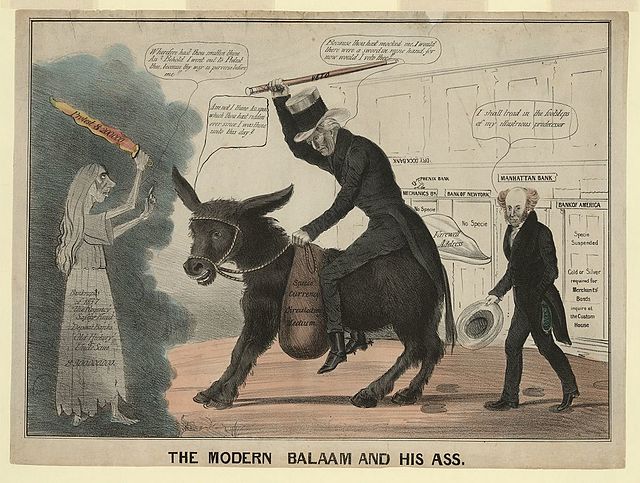History of the Democratic Party (United States)
The Democratic Party is one of the two major political parties of the United States political system and the oldest active political party in the country as well as in the world. The Democratic party was founded in 1828. It is also the oldest active voter-based political party in the world. The party has changed significantly during its nearly two centuries of existence. Once known as the party of the "common man," the early Democratic Party stood for individual rights and state sovereignty, and opposed banks and high tariffs. In the first decades of its existence, from 1832 to the mid-1850s, under Presidents Andrew Jackson, Martin Van Buren, and James K. Polk, the Democrats usually bested the opposition Whig Party by narrow margins.
Andrew Jackson, founder of the Democratic Party and the first president it elected.
An 1837 cartoon depicted Jackson leading a donkey which refused to follow, portraying that Democrats would not be led by the previous president
Martin Van Buren
August Belmont: DNC Chair for 12 years during and after the Civil war
A political party is an organization that coordinates candidates to compete in a particular country's elections. It is common for the members of a party to hold similar ideas about politics, and parties may promote specific ideological or policy goals.
The members of political parties, such as those of the Indian National Congress (pictured), coordinate to collectively achieve and use political power.
In A Block for the Wigs (1783), James Gillray caricatured Fox's return to power in a coalition with North. George III is the blockhead in the centre.
Political parties like the Romanian Communist Party can arise out of, or be closely connected to, existing segments of society, such as organizations of workers.
It is easier for voters to evaluate one simple list of policies for each party, like this platform for the United Australia Party, than to individually judge every single candidate.








